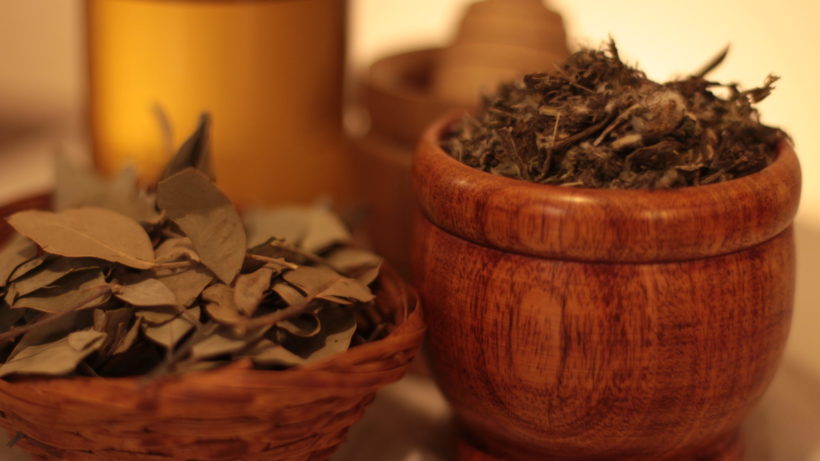REHUNO Salud shares the first of a series of three articles under the title: Phytotherapy, knowledge and experiences. These are reflections that bring us the words of Horacio Mesón, the author, a specialist in this millenary science, who, based on his memories and personal experiences, invites us to delve deeper into the subject.
By Horacio Mesón
The task is to write about “Phytotherapy” and the question is: Where do I start? There is so much to tell and transmit, discoveries, encounters, wellbeing, own and other people’s experiences. Very interesting. So many insights in the last decade, so much added value.
It seems to me that the most important thing is to make it known that we all do Phytotherapy and that our link with plants is as old as our existence. The plant kingdom has been and is at our service since ever and we have not been and are not reciprocal at all.
Why do we all do Phytotherapy?
Since I was a child when I imitated my elders, in this case my maternal grandparents. I would cut some leaves of Hierba Buena (a variety of mint) from a damp flower bed in the house, put them in a small or medium-sized container and add water. In this case he played with cold water, but hot water is poured in at a temperature before boiling and left to stand for a few minutes. Then you drink it at a comfortable temperature.
This is an infusion and the active principles of this plant were focused in this case to solve stomach pain, probably some colic due to indigestion.
I remember when my grandmother used to apply a warm Rosemary infusion to my eyes with a cloth. These were washes that she sometimes used to give me with Horsetail, both of them working as disinfectants for supposed conjunctivitis or something similar.
Poultices are another way of using this therapy or discipline; for a small inguinal tear when I was a child, I applied macerated or boiled Mallow leaves (already warm) on the affected area.
It so happens that at home people always spoke well of the plants, highlighting their virtues and attributes. The latter (Mallow) could be found in any vacant lot, on a pavement, on the sides of the railway tracks, etc. It was a ceremony to go and collect these sacred plants, it was also a rite that was done with affection and neatness.
In those years, visits or walks to a field or dairy farm were an adventure and there I learned to see a world that people generally do not see. Plagued by plants with healing properties, today I still do it every now and then.
Antonio, my grandfather, used to prepare tremendous concoctions of garlic and alcohol. He used to take them in the morning and his breath gave him away, it was for his blood pressure.
This preparation is called Mother Tincture, which is nothing more than a hydro-alcoholic solution with the active ingredients of a vegetable. The alcohol works as a solvent extracting the properties of whatever is immersed in it for a period of time, two or three weeks. It takes a simple procedure.
Or vaporise Eucalyptus or Thyme for the airways, bronchi and lungs who hasn’t done it. More than four thousand years ago the Egyptians used to vaporise different vegetables by throwing them on hot stones in a ritualistic way. These were healing ceremonies and vaporisation is a technique. For example they threw “buds” or Cannabis flowers knowing today that thanks to their cannabinoids they produced and produce a persistent feeling of well-being and much more than that.
To make Cannabis oil, ointments or ointments is to make Phytotherapy. There is a speciality which is Phytocosmetics; there is so much to say.
Phytotherapy is a term coined by the French physician Henri Leclerc in the early 20th century, a neologism formed from two Greek words: phytón (plant) and therapeía (treatment). Etymologically, it refers to the treatment of diseases with plants.
It consists of the treatment of ailments with the resources that nature offers us through plants. It is not a modern therapy and arose from the urgent need to recover and maintain health. It is not a therapy exclusive to humans; animals also take advantage of the virtues of many plants to improve their health.
We see that the plant kingdom is not only the first link in the food chain, providing food for herbivores and omnivores; it is also the main supplier of remedies for health problems in the animal kingdom.
To search for the origins of Phytotherapy is to get lost in time. What is curious is the way in which all ancient cultures found the plants with the right properties for each condition. They lacked the instrumental and analytical techniques that we use in our laboratories today.
Today it is difficult to understand this because we do not have that integral or holistic view of life and existence. Neither does the devotional worship of Mother Earth and all her inhabitants matter not “her kingdom”. Nothing was detached from that deep and transcendent feeling.
Thanks to this bond, which I deepened when, out of urgent necessity with my very ill body, I made use of Phytotherapy; from it I was able to connect with the essential of each plant, of each being. By different means and with different procedures I was able to reach almost to the spirit of each one of them. And when I was able to caress their essence I was able to caress my soul.
To be continued…
So much for the author’s words for this first note.
If you would like to contact him, please write to him at: horaciomeson@yahoo.com.ar
REHUNO Health (www.rehuno.org)






